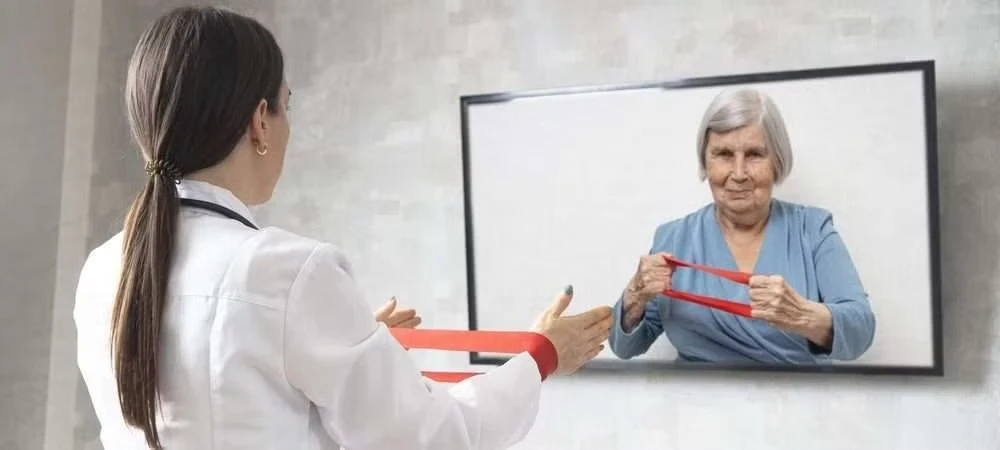The way we receive medical services has drastically changed in part due to the COVID-19 pandemic. Initially, when everything was on lockdown, non-essential medical services were not available. As restrictions were relaxed, and non-essential medical services reopened, they adapted and altered some of their care and treatment options.
One major development that came about was the widespread use of virtual healthcare through Zoom and other secure web-enabled platforms. While face-to-face physiotherapy visits are still necessary at specific intervals, virtual physiotherapy treatments allow patients to receive ongoing care from the safety of their homes.
How Does Virtual Physiotherapy Work?
Virtual physiotherapy is a viable solution that allows us to talk to our patients to monitor their progress, answer their questions, and address any current concerns or complaints. During appointments, the patient and therapist to speak privately and confidentially.
Your therapist can see you through the video camera on the computer to perform a visual evaluation that can include monitoring movement, mobility, and other patterns to determine progress. They are also able to teach you various exercises that are part of your treatment plan to aid in your recovery.
Virtual Physiotherapy Allows for Continued Care from Home
An essential aspect of physiotherapy is receiving continuing care. Stopping treatment is not recommended as it could impede your recovery. For chronic conditions, stopping treatment could result in the condition worsening.
Thanks to virtual physiotherapy, you can continue to receive care from the safety of your home. For our patients that are using virtual physiotherapy, they are happy they can continue receiving care to help improve their conditions with guidance and supervision from their physiotherapist.
What Is Required for Virtual Physiotherapy?
Patients will require, at the very least, access to a computer with a working video camera. Conversations can be carried out over the telephone. However, it is better to use a computer that also has speakers and a microphone. Some patients can also use their tablet or smartphone for virtual physiotherapy sessions.
You will require a strong and steady internet connection for the duration of your appointment. Video is necessary for your physiotherapist to do a visual examination and to show you different exercises and other techniques you can do at home to help promote your recovery.
What If I Need Hands-On Physiotherapy?
Hands-on physiotherapy treatments are still available. However, your physiotherapist may have specific requirements and guidelines for in-office visits. Your physiotherapist’s office should do a screening ahead of your visit when they confirm your appointment, like asking coronavirus-related health questions, if you feel sick, have a fever, and so on.
Upon arrival, expect your temperature to be taken. Your physiotherapist will require you to wear a facemask throughout your entire visit. Other safety protocols and practices may be in place. Your physiotherapist will explain these before your visit.
Physiotherapy First offers the Brampton community and surrounding area exceptional rehabilitative care with personalized treatment plans to suit specific needs. If you are experiencing pain or other symptoms, have recently had an injury, or would like to improve your mobility and function, our Physiotherapists and Healthcare Team will work with you to ensure you get back to the activities that are important to you. For further information about virtual physiotherapy treatments or to schedule an initial consultation for neck pain, shoulder pain, lower back pain, or pain in other parts of the body from injuries or chronic conditions, please feel free to contact Physiotherapy First at 905-796-6662 today!


